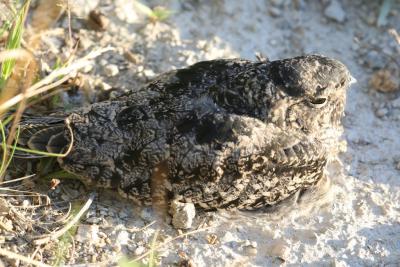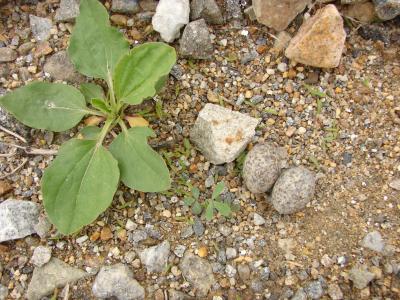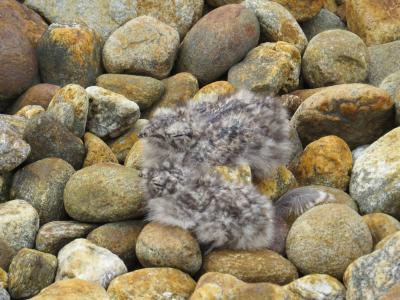Common Nighthawk
Chordeiles minor

NH Conservation Status: Endangered
Federal Status: Not listed. Common nighthawks are legally protected in New Hampshire. Possession and take (which includes harming, harassing, injuring and killing) is illegal.
Distribution: Statewide
Description: The common nighthawk is a medium sized bird, about the size of a dove, 9 inches (22-24 cm.) from tip of bill to the end of the tail. Its wingspan is 21-22 inches (53-57 cm). Nighthawks are very well camouflaged with a mottling pattern of browns, black and grey plumage. The most characteristic feature for identifying a nighthawk is the distinct, broad, white patch on the underside of each outer wing. In flight, nighthawks have long, pointed, bent wings.
Voice: "peent" Males also make a "booming" sound with their wings during territorial displays. The male’s peent call is extremely similar to American woodcock peents. They are difficult to tell apart. Woodcocks typically return to New Hampshire in March and peent until mid to late May. Nighthawks do not usually return until late May so any peenting in March, April or early May is almost certainly a woodcock. There is a brief overlap in late May when woodcocks and nighthawks may both be peenting. The location of the peenting may help identify the species. Woodcocks peent from the ground while nighthawks peent from high overhead.

Commonly Confused Species: Mourning dove is a similar size and shape to a common nighthawk. It often flies to roost about the time that nighthawks are becoming active. It is most likely to be confused with a female nighthawk coming in quietly to a nest site. Mourning doves lack the white wing patches of the nighthawk. Killdeer have pointed wings like a nighthawk and are a similar size. They also nest on the ground in open habitat, including stone rooftops. They have a white breast with two dark breast bands and are not likely to be confused with nighthawks if they are seen well. However, at dusk, they may present a similar silhouette and lift off from the ground or rooftop where nighthawks might also be expected. Eastern whip-poor-will and common nighthawk may occupy the same habitat and look similar when roosting, but whip-poor-wills are seldom spotted during the day and readily told apart by voice at night.
Habitat: In New Hampshire, nighthawks primarily use pine barrens, openings in Appalachian oak‐pine forests, rocky ridges, and urban habitats.
Nesting: Nesting usually occurs between late May and early August. The female chooses the nest site and typically two eggs are laid between late May and mid-July. If the first nest fails before or about hatch, they will usually re-nest if it is not too late in the season. This species does not build a nest but lays its eggs directly on the ground in an open area, usually on bare dirt, mixed gravel, pea stone, or even bark mulch. The female usually incubates the egg for approximately 16-20 days. The young are precocial and can move from the nest very soon after hatching but are dependent on the parents for food and the female for protection before they are fully feathered. The young take their first flight in 18-23 days but don’t fly well until 25-30 days.

Diet: Flying insects, primarily beetles, ants, and moths.
Resources:
Nighthawk Fact Sheet from the NH Wildlife Action Plan
NH Audubon's Project Nighthawk web page



